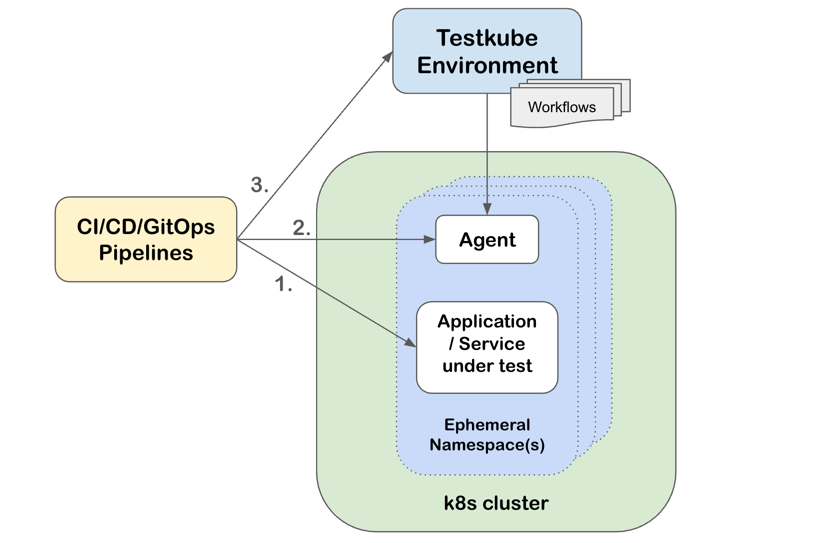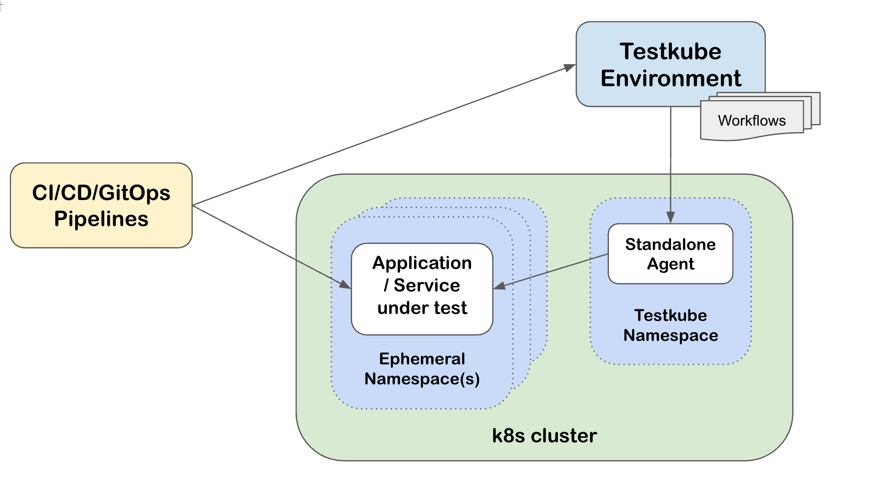Ephemeral Environments
While application namespaces/clusters are often long-lived (dev, staging, prod, etc.), it is equally common to provision short-lived clusters and/or namespace for pull-requests, local sandboxes, etc.
Using Testkube to run tests in these ephemeral namespaces/clusters can be achieved using both multi and single-agent setups.
Multi-Agent Approach
With the addition of Runner Agents to Testkube, supporting ephemeral/short-lived namespaces/clusters is straight-forward:
- Provision your ephemeral namespace/cluster and application as desired using the tool of your choice.
- Create a corresponding Runner Agent in the same namespace/cluster as described at Independent Runner Agents.
- Run your Workflows on this Runner Agent using the corresponding targeting arguments, the execution results will be aggregated on the Control Plane as before and contain metadata on which Runner Agent they were executed.
- Remove the Runner Agent and tear down your namespace/cluster when finished.
- View the results/artifacts/resource-usage of your Workflow Executions in the Testkube Dashboard as before.
Steps 2, 3 and 4 above can all be automated via the Testkube CLI in your CI/CD pipelines; the following diagram describes this setup.

Single Agent Approach
If you are not able to install a dedicated Runner Agent for each ephemeral namespace/cluster, you can
use Testkubes executionNamespace with the Standalone Agent instead:
- Install the Standalone Agent for your Testkube Environment in a dedicated namespace in the same cluster(s) that you will be provisioning ephemeral namespaces, make sure Namespaces for Test Execution are set accordingly.
- Use the
executionNamespaceproperty in your Workflows to configure in which namespace they should execute,
either statically or dynamically as shown below. - Trigger the execution of these Workflows as you would normally from CI/CD, Kubernetes Events, etc.

Runtime executionNamespace configuration
To reuse a Workflow across any number of ephemeral namespaces, you can specify a corresponding configuration parameter in your Workflow:
kind: TestWorkflow
metadata:
name: example
spec:
config:
namespace:
type: string
job:
namespace: "{{ config.namespace }}"
and then specify the namespace at runtime, together with any other configuration parameters:
testkube run tw my-workflow --config namespace=pr_1234